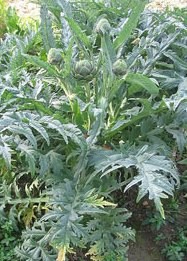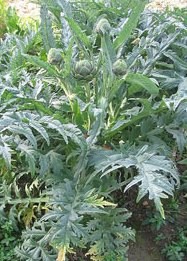Area
Mediterranean countries also grow in the arid conditions of the Canary Islands.
Botanical description of the plant
The first harvest of artichoke leaves reaches 70-80 cm in late June-early August, and the second harvest in late autumn.

Medicinal properties
Artichoke is an unconventional, valuable plant for Uzbekistan and is used as a raw material in the pharmaceutical and food industries. Flavonoid glycosides in the leaves of the artichoke plant - cinaroside, scolimoside and cinarotrizide; phenolcarboxylic acids (coffee, chlorogen, neochlorogen, 4-o-caffeil-caffeil-D-quinine). Glyceric acid and the polysaccharide inulin were found in the surface of the plant. Gulora contains protein, carbohydrates, carotene, inulin, a large amount of vitamins - thiamine, riboflamin, ascorbic acid. Artichoke is used in the treatment of liver and kidney diseases. Used in the treatment of diabetes mellitus.
Growing technology
The main plowing is carried out in November at a depth of 25 cm. Corn is planted in rows 40x40 using the SON unit. The best time for planting is October-November in autumn and March-April in spring. Seeds are sown at a depth of 3-4 cm at a rate of 6 kg per hectare by hand and 8 kg per hectare by hand. Mowing is done 3 times a year (mid-March and June) using a mowing tractor. From the second year there is no need to prune at all, because the petals surround themselves and do not allow the growth of foreign plants. During one growing season, 100 kg of nitrogen, 70 kg of phosphorus and 30 kg of potassium fertilizers are applied per hectare. From the surface of the artichoke in the first year can get 700–800 quintals per hectare, in subsequent years 1500–1700 quintals of wet mass. Yields decrease in 7–8 years. Artichokes can be harvested for up to 10 years from the planted area.





